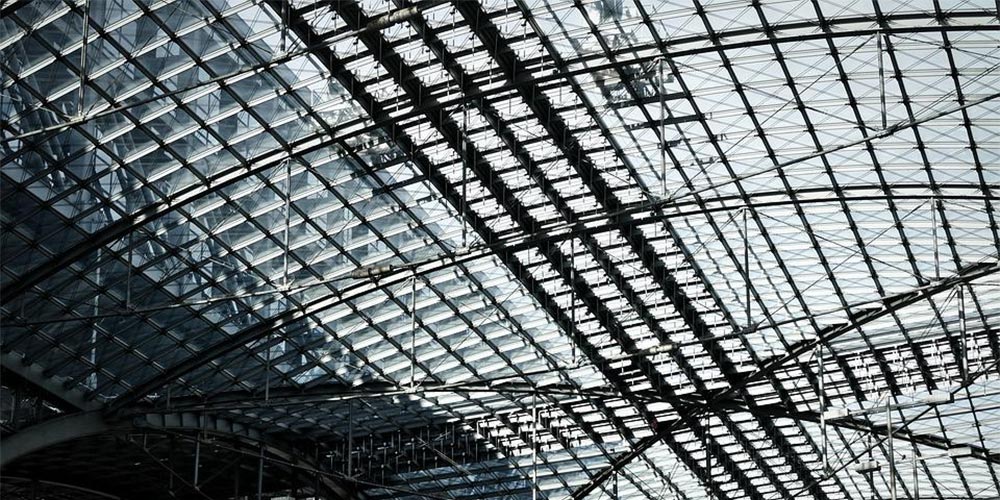
Fasteners play a vital part in how a standing seam metal roof will operate since fasteners are the primary anchor points for the metal panels to remain connected to the roof deck. Learn the many kinds and prices of fasteners check this website here.
What is a Fastener?
A fastener is a hardware device that binds two items together. Available in many forms such as bolts, nuts, washers, screws or rivets; fasteners are responsible for a lasting union between the roof and the purlins. These nuts and bolts used to connect the metal roof system assure the operation of a large portion of the roof performance and in turn, of the building.
Why are Fasteners the most Important aspect of building a metal roof?
As the classic phrase goes; ‘it’s the small things that matter’. Fasteners may appear trivial; but contain the key to your complete roofing system. They are accountable for the overall functioning of your roof and ultimately the building itself. Therefore, having a decent quality fastener is quite vital. Even a little flaw, may create significant calamities such as leaks and destruction. Thus, fasteners are a vital aspect of the roof installation procedure.
Choose an experienced roofer
Your roofer must be an experienced specialist in picking the proper fastener for your metal roofing system. The chosen fasteners should meet or surpass the expected lifespan of the panels they will be used on. During the installation of a metal roof, a roofer must use the proper fasteners to ensure the roof’s durability.
Typically, for roofing projects, panel manufacturers will define the kind of fastener to be used as well as the performance requirements the component must fulfill. There are a number of elements that might influence the choice of fasteners, including:
- What materials are you using to join together?
- What is the required standard of performance?
- Is attention given to pull-out, pull-over, or shear properties?
- These criteria may influence a particular fastening pattern, the distance between fasteners, or, in certain situations, how close to the edge a fastener may be utilized in certain substrates.
- Is moisture or condensation an issue?
- Does the structure include treated wood, dissimilar metals, or any other condition not specified on the drawings?
- Is this a new building or a renovation/addition to an existing structure?
- Are there engaged architects and/or engineers?
Consider the following before making a purchase choice
Before beginning a metal roofing or re-roofing project, you must evaluate the different materials and possibilities on the market. Considerations include the material and coating of the fastener, the kind of head and washer, the number of threads, and the length of the fastener.
We propose installing metal cladding as follows:
For the roof, it is always on the crest or at the rib site, never in the valley or on the ridge.
It may be mounted on the crest or valley of a wall.
Class 3 fasteners are indicated for general exterior usage in moderate to mild marine applications, whereas class 4 fasteners are suggested for use in extreme marine environments.
As the number of metal roofing firms and metal roof construction have increased, so has the variety of available fastening screws. Fasteners are essential to the functioning of metal roofs as a whole. Choosing the most efficient roofing fastening screw assures energy efficiency and high craftsmanship, satisfies required uplift criteria and minimum design loads, and increases roof longevity. If you choose the incorrect fastener, your roof may fail.
Roofs with Screw-Down Fasteners
Typically, screw-down or exposed fastener roofs are simply screwed into the substrate. Numerous utilitarian structures use this rather simple roofing style. Head types, threads, and drill points differ according to the corresponding materials and application.
The design of the fastener should account for a particular coating and finish. People often refer to galvanized base finishes, although this is really a misnomer. The current industry standard calls for a new generation of corrosion-resistant coatings to be applied to the head and threads of all fasteners, resulting in significantly increased corrosion protection.
For further safety and aesthetics, the roof panel’s color is matched to the fasteners. The head of the fastener will thus merge with the panel color and be less noticeable than if it were unpainted. Again, there are options; paint or powder coating is a common personal preference.
The most effective method for preventing corrosion is to use a durable head. The head of these roofing-specific fasteners is resistant to corrosion. Typically, the head is made of zinc-aluminum alloy or stainless steel from the 300 series and is guaranteed not to rust. Additionally, these components may be painted to match the roof panels. Additionally, a washer is needed for these fasteners. This enhances the seal after the fastener has been tightened.
Standing Seam Roofs
Standing seam roofs are a high-end product that is generally utilized on high-visibility projects that need greater visual appeal. Standing seam refers to the vertical seam that links two panels, with the fasteners normally concealed behind the panel, out of sight and protected from the weather. In standing seam installations, a clip is fastened to the roof deck using fasteners with a pancake or low-profile head.
